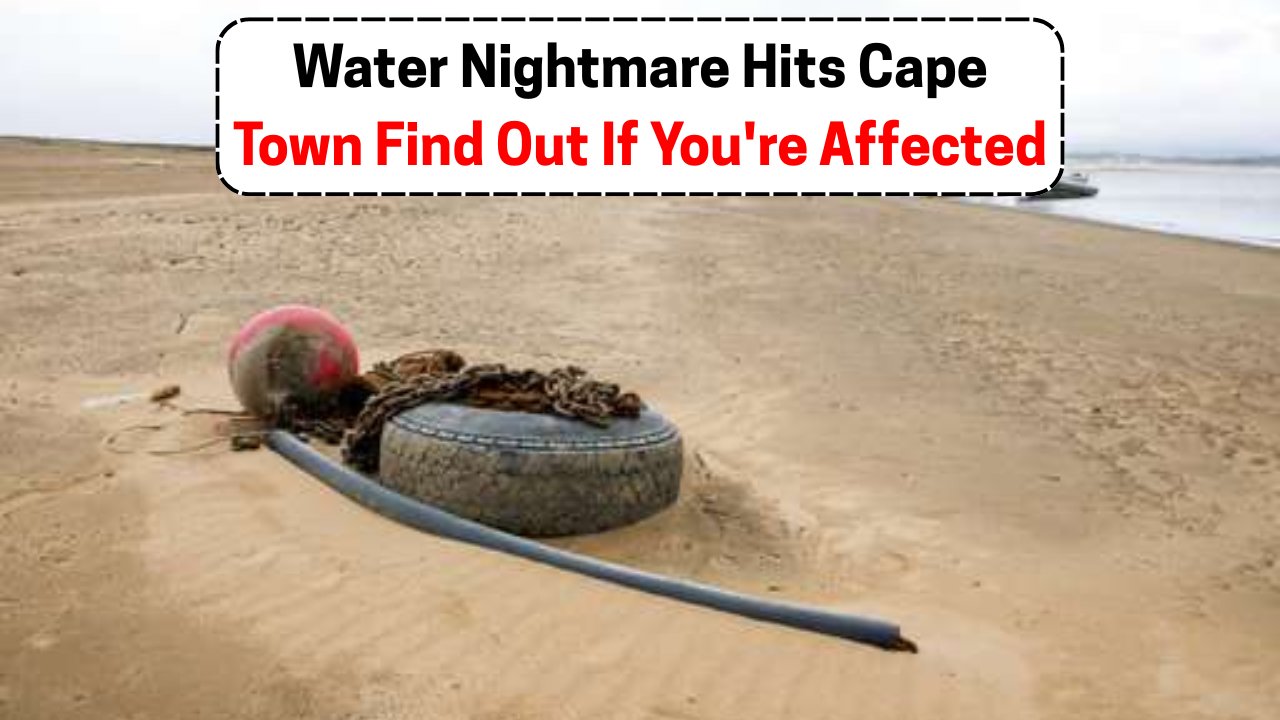Cape Town 6-Day Water Nightmare – Cape Town is bracing for a six-day water nightmare as reservoirs struggle to recover and critical pipelines undergo emergency repairs. Thousands of households woke to empty taps, dry geysers, and long queues at tanker points, while businesses scrambled to keep doors open with limited supplies. City teams say overlapping pressures—from pipe bursts and ageing valves to pump interruptions during power cuts—have forced staggered shutdowns to stabilise the network. Health facilities and schools are prioritised, but the knock-on effect is being felt street by street as balancing reservoirs fall below safe operating levels. Officials are publishing rolling updates, advising residents to store only what they need, switch off geysers, and report leaks immediately to avoid further losses. Community groups are coordinating drops for elderly residents and informal settlements, where access is most fragile. With conservation targets tightened and pressure management zones widened, residents are being urged to treat every litre like gold until the system is fully restored.
Why This Happened and Why It Matters
Cape Town’s water grid is a finely tuned balance of dams, treatment works, storage reservoirs, and high-pressure pipelines moving millions of litres each hour. When a major trunk line or pump station is constrained, operators must redirect flows, lower pressure, and sometimes isolate entire zones to prevent catastrophic bursts. Add unplanned outages during power cuts, and valves can close out of sequence, trapping air and stressing old joints. The result is a domino effect: some areas see trickles, others go dry, and reservoir levels drop below the threshold that keeps pumps primed. This matters because once suction is lost, restarting safely can take hours—or days—while engineers bleed air, disinfect lines, and test water quality. Businesses face lost revenue, schools shift to remote schedules, and clinics ration non-urgent procedures. For households, hygiene routines, cooking, and childcare all become complex, elevating the risk of water-borne illness if people resort to unsafe sources or reuse stored water incorrectly.
Is Your Area Next? What to Watch
Risk shifts as engineers juggle reservoir levels across pressure management zones. Areas at higher elevation, at the end of long feeder mains, or served by the same trunk line under repair are most likely to feel the pinch first. Watch for official alerts about pressure reductions, tanker deployments, or temporary standpipes; these usually signal that a reservoir is dipping below target. Brown or cloudy water after supply resumes can happen when flow patterns reverse—let taps run briefly until clear and avoid using appliances until water stabilises. If your suburb sits between two zones, you may experience intermittent supply as valves are throttled to balance demand. Keep an eye on dam-level bulletins and the city’s outage map; when consecutive updates show declining storage or extended repair windows, prepare for reduced pressure. Crucially, collective savings matter: a ten percent cut in neighbourhood demand can keep a reservoir above the tipping point that triggers a full shutdown.
What You Can Do Right Now
Start with smart storage: fill clean, food-grade containers and label the date; aim for two litres per person per day for drinking, plus extra for cooking and hygiene. Switch off your geyser to protect the element when supply is low, and close toilet inlet valves to prevent continuous refilling. Use a basin to capture hand-wash water for flushing, and adopt a ‘one-pot’ meal plan to reduce dishwashing. Check on neighbours who are elderly, disabled, or caring for infants, and share tanker pickup info in local groups. Inside buildings with roof tanks, restrict lift use and stagger shower times to slow drawdown. Avoid opening plumbing to ‘let air out’—that can introduce contamination; leave purging to technicians. Disinfect stored water weekly with unscented household bleach (5%): add four drops per litre, mix, and wait thirty minutes. Finally, photograph and report visible leaks or illegal connections—the fastest ‘new source’ is the water we stop wasting together.
When Will Water Return? Realistic Timelines
Restoration is gradual, not a light switch. After a repair, crews must recharge pipelines slowly to avoid new bursts, then raise reservoir levels to the ‘comfort band’ that keeps pumps stable. Even once a trunk line is live, high-lying suburbs may lag by 12–36 hours as pressure builds. If water returns murky or milky, that often indicates air entrainment and should clear within minutes; persistently brown water warrants a quality report. Expect rolling updates that compress or extend windows as engineers validate flows in real time. A realistic sequence is: repair completed, controlled re-pressurisation, reservoir recovery, quality checks, and finally steady supply—each step can add hours. The surest accelerators are neighbourhood conservation, swift leak repairs, and patience with pressure management. If your area sits on the far end of a feeder, plan for the full six-day horizon; if you are near storage, you may see recovery sooner, albeit at lower pressure initially.
